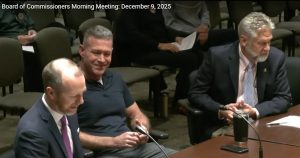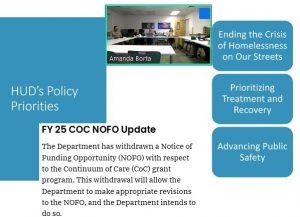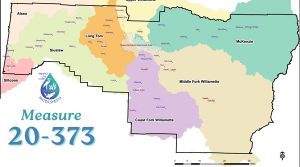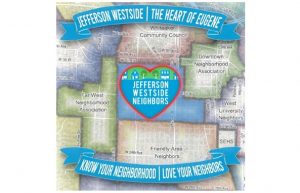4J asked to keep Japanese immersion school in North Eugene
13 min read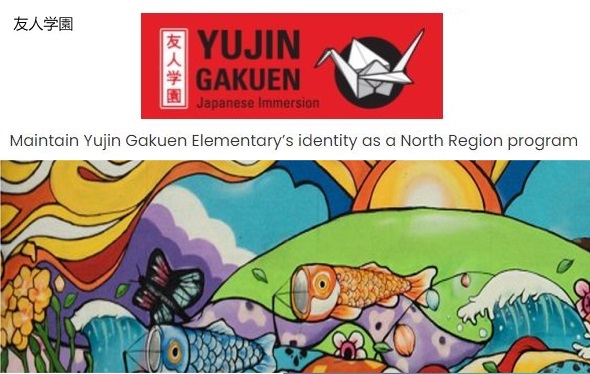
Students, parents, and teachers from North Eugene’s Japanese immersion school packed the 4J board meeting Nov. 15. They say the district broke its promise.
Kaito Garratt (Yujin Gakuen student): My name is Kaito Garratt, and I came to Oregon excited to attend the first Japanese immersion school in the U.S. I’ve been in Yujin Gakuen for almost three years.
Recently in my class, we were introduced to a book called ‘Thunder Rolling in the Mountains,’ written by Scott O’Dell and Elizabeth Hall. This book has a similar situation to us what is happening to our Yujin Gakuen. Tonight, I will talk about what is happening to my school, and how it relates to the book I am reading.
[00:00:41] ‘Thunder Rolling in the Mountains’ is about how the Nimiipuu tribe got kicked out without a say, and the government didn’t keep their promises to give the land back, which led to war. Yujin’s Gakuen situation is similar to that of the Nimiipuu Tribe, because we are getting evicted multiple times without any say, and we aren’t getting our campus back like promised.
[00:01:03] Yujin Gakuen is getting kicked out once again to a temporary location, like how the Nimiipuu Tribe were forced to small reservations without any hunting grounds. Why does 4J not seem to care about this Japanese immersion program which is so loved by students, teachers, and the community as a whole?
[00:01:23] Some of my friends will not attend at Yujin Gakuen because of all of the moving and not knowing what is going to happen to the program’s future. Some of the tribe members in the book were either afraid to stand up for what they believed in, or tried to work out their differences even though the settlers had no intention of meeting them halfway.
[00:01:41] I see the same thing happening at Yujin Gakuen. Why does the district want to take away something that is so important to us? I thought the district’s job is to support schools, education, and the development of children, instead of taking away growth, opportunities, and the basic needs of a school.
[00:02:01] My plan is to continue my Japanese immersion program at Kelly Middle School, but unfortunately some of my friends will no longer be able to attend Yujin Gakuen (Elementary) due to the relocation in South Eugene.
[00:02:12] I think that the school district should keep their promise and maintain Yujin Gakuen in our original North Eugene. I am a mix of Japanese and white. And it has been difficult to find a place where I fit in with other people. In Yujin Gakuen, I finally found that place where I fit in. I would like to have a permanent school site where we don’t have to worry about moving again.
[00:02:34] And we don’t have to worry about the very existence of our school.
[00:02:38] John Q: Another YG student asked the board to let them stay in their own North Eugene neighborhood.
[00:02:43] YG student: We don’t want you to move our school across town. This is why: We like being able to walk and ride our bikes to school. I’m going to miss my friends that won’t be able to move. It is also my little sister’s first year and I don’t want her to lose her friends next year. Why do other schools get their own school and buses, but we don’t? You need to understand and listen to us. We want to stay here in YG. This is like our home that we feel safe.
[00:03:10] Debbie McKim (4J School District): Our next speaker tonight is Kelly Stroh.
[00:03:13] Kelly Stroh: Hi guys. Not the first time I’ve been up here, nor will it likely be the last. But I come up here as not just a YG employee and parent, but also as a North Eugene long-term resident and a voter. So I went to North, I went to Madison. And we know there’s been a lot of mistakes made with this bond.
[00:03:30] We realize that Corridor and Yujin Gakuen were told that they could have the North Eugene building. That was overturned, and that North Eugene building was deemed to be unfit because of all the updates it needed. And then we were told, ‘Well, you’re in Kelly.’ And we started moving forward with this plan to kind of keep us at Kelly and figure out how we can co-live.
[00:03:50] And we had this great three-step plan that Andy Dey and his group put together and most of you on the board were not part of this process, but there were some. And we were in the middle of this dialogue in this discussion thinking that we were going to make a long-term future for YG.
[00:04:07] And then in June there was this abrupt message of ‘No, we’re not making a future for you. We’re just basically expelling you from this building. We’re sending you out with nothing, with no long-term.’ And I stopped and I said, ‘Well, hmmm. As a voter that approved this bond, I didn’t approve a bond that was just removing a program from the North Eugene region.’
[00:04:29] Now I know that the North Eugene region is meant to be seen as a densely-packed corridor in the future. They’re building apartments like crazy. I don’t know how many of you live there, if any of you live in North Eugene, but it’s not South Eugene. It is being infilled at a high level with lots of apartments and lots of housing because there’s lands. But now at this point we’ve closed Corridor (Elementary).
[00:04:52] We’re moving YG. We have almost 500 positions that kids could be going to school at that are not available in North Eugene, but we’re bringing more people in. So I’m concerned. What is the trickle-down effect? How is this impacting our other elementary schools? How has it already impacted them when Corridor closed?
[00:05:08] Does Howard have room for 38 more kids? We have 38 potential kids that would go into Howard if YG is closed. We have 109 kids that are Eugene’s kids, not Bethel’s, that would go into River Road, Howard, Aubrey Park, and Spring Creek. So my question is, as you’re looking at making these decisions in the future, are you looking at all the facts?
[00:05:30] If YG leaves North, is there an impact with other programs at North? We’ve heard that Yujin Gakuen kids and Rio Del Camino kids, that’s 50-50 of the international baccalaureate program. If you take Yujin Gakuen students out of North Eugene, do you have enough to run an international baccalaureate program?
[00:05:48] I know that some of the parents at Yujin Gakuen have started a booster club back up at the high school that supports all students in all of North. If you take those parents away, do you still have those booster programs? So what is the bigger impact on North Eugene region? What is happening? Are you doing your research before you’re making these choices?
[00:06:08] We get that a long-term solution of us staying in North at our current location isn’t feasible long-term. But to expel us from this building with no future plan when you’ve already invested taxpayers’ money, and you’ve already put things in place so an elementary school can be there, it seems like more of a waste and more of a disillusion of what you guys said was going to happen.
[00:06:30] We were talking about how to make this work temporarily in the Kelly building, and then that was stripped out. We didn’t even know that was an option on the table. As a parent, as a taxpayer, we have lots of documentation. So, as you go forward on this process, I’m hopeful there’s a, largely a new board, that you will do due diligence.
[00:06:48] You’re going to look into the facts. You’re going to go to the River Road Community Organization meeting. You’re going to meet with the other schools. You’re going to talk to South Eugene if that’s where we’re going. You’re going to talk to Spencer Butte (Middle School) if that’s where we’re going. And you’re going to find out, is there actually room for this program over there?
[00:07:02] Or are you just taking us from one region, taking away opportunities from that area, taking away places for students to be placed and then creating a problem in another region? So, as we continue with this process, please do your research, look into things, think about the real impact on all of your schools when you start moving programs.
[00:07:22] Debbie McKim: Next up we have Allison Johnson.
[00:07:25] Allison Johnson: My name is Allison. I teach at YG and my kids are in fifth and eighth grade at YG. I don’t know where they will go to school next year. I am a North (Eugene) resident and I voted for many of you. I know the new faces on the board would like to help YG. I ask you to today reconsider the decision made last year to tear down Old North (High School). Use the space as a temporary location for YG rather than the Willard site while the district works towards the Monroe building as our future home.
[00:07:55] The decision to demolish was made by the board under a great deal of pressure. It was stated by our superintendent any hesitation would delay the opening of new North. There was an inadequate amount of information as to why the building was unsuitable for future use, considering at the time it was full of high schoolers. And Corridor was originally slated to move there.
[00:08:15] If you look on 4J’s website about YG’s program moves, I quote, ‘North Eugene building available for future use 2023-24.’
[00:08:23] How did the price tag to fix North become $34 million? When I looked on 4J’s website, I found the long-range facility plan from 2018. I encourage you to look at the data in this report. ODE assessments ranked Spring Creek and Adams with higher deficiency scores, RCI, than Old North (page 12). These schools are still full of students.
[00:08:46] At that time, Priority 1 Deferred Maintenance for Old North was listed as just over $8 million, including safety, security, instructional technology, and infrastructure. Of course, construction has gone up significantly in the last year, but quadruple the cost? It doesn’t add up. We need accountability. With $11 million in bond money for programs displaced, we are not asking for a full modernization.
[00:09:10] For years, YG has existed in old buildings that need work. We don’t need a Cadillac building. We’ve never asked for one. We want to exist. You’ve asked what we need to be a robust K-12 program. We need our North community. We do not want to lose them. And right now, we see a big, empty school just waiting to be demolished right down the street.
[00:09:33] When school choice begins in January, we ask ourselves, who will Willard YG appeal to? Will North families want to commute for the next five to eight years? To drive up congested Chambers past Chavez and ATA traffic, an estimated 25 minutes during peak hours? Multiply that by two to go home, then two again for pickup, that’s over an hour and a half of driving each day. That kind of gas money is not possible for many families. Busing students for an equal amount of time offers its own logistical challenges.
Will a Willard YG appeal to South families nearby, knowing that the program is moving back to North? Or that their students will no longer be on track to go to South (Eugene High School)? Not likely.
[00:10:12] Moving to the South region and back again in five to eight years will kill our program. Taking YG out of North will have a far-reaching negative impact. We’ve heard from after-school programs, such as the Y River Road Parks and Rec Swim program, they’ll be impacted by our move. Strings Academy Kelly Orchestra, which meets before and after school. Families who leave YG will be joining schools already bursting at the seams. Fewer opportunities for North students.
[00:10:37] This is an equity issue. North families deserve to have an equitable number of choice schools. You’ve closed Corridor (Elementary), that will leave us with zero choice schools and River Road is the only immersion program in easy driving distance.
[00:10:50] Working families in North who try to stick it out with us will be limited in after-school programs due to time constraints of transporting students across town. This is wrong. This is not equity. You still have time to reverse this decision. We have almost a year to update Old North and move in five to eight years. We can move back to this building, and North Eugene can have a green space when we leave. Please make this right.
[00:11:15] Debbie McKim: Next up, we have Janesta Sol.
[00:11:18] Janesta Sol: Something that I was really surprised about when I came to work at YG: There is this kind of amazing contingent of families who are Spanish-speaking and they come to YG and their kids speak Spanish and they come to YG and they learn English and they learn Japanese. And I think that is just amazing. And so I brought you Mateo here to show you. (You want to come talk right here for a sec, remember?) To show you the three languages that he can speak. Not just two, but three. And he’s only in first grade.
[00:11:48] Mateo: I can speak three languages. They’re called Spanish, English, and Japanese.
[00:11:56] Janesta Sol: When I met him last year, he spoke almost entirely Spanish. Now his English, as you can tell, he’s very fluent, and he’s also learning Japanese, and he is one of maybe two dozen kids or so at our school and I just think that’s the coolest thing. I also want to mention that families like Mateo’s, we have to stay in the North region.
[00:12:18] Also, while all the teachers have been guaranteed or are talking about being guaranteed their positions, EAs (Educational Assistants) won’t be. We’ll all just lose our jobs if we go to South, because there probably won’t be enough kids. And even if we didn’t lose our jobs, most of us live in North, and we don’t really have the means to be able to commute every day.
[00:12:36] So, I just wanted to give you, I guess, a little picture of people who don’t have the luxury of being able to come and speak every two weeks here to you. There are families that won’t be able to go and honestly, they probably don’t even realize they won’t be able to go yet because I don’t think everybody’s known.
[00:12:54] Debbie McKim: Up next we have Amanda Christie.
[00:12:57] Amanda Christie: These are my students here supporting me and, you know, are your students. And I’m Amanda Christie and I teach at YG and I’m also a North Region resident.
[00:13:09] I wanted to address the process. We’ve got Phase 1, 2, 3. We have done Phases 1 and 2. The bullet points in Phase 2 are…they’re a little problematic, the way that they were carried out.
[00:13:26] Phase 3, where we are now, our district has identified the following values in its decision-making for the 850 Howard Ave. building:
[00:13:35] First, ensure that both programs have the facilities and space required for robust and vibrant educational opportunities.
[00:13:41] Maintain Yujin Gakuen Elementary’s identity as a North Region program. That was a core value and something that was decided from the beginning of that process with our two board members present and decided by them.
[00:13:56] Three: Develop both short- and long-term plans for the North Eugene region, including Kelly Middle School and Yujin Gakuen Elementary. As you can see, it’s a North Region school. Has been for 35 years. And she’ll continue to be so, giving these students and others, like Mateo, access to this language immersion program.
[00:14:22] Not South Eugene, where there is already a language school choice option. I don’t want to deny them access, of course, but I do want to ensure that our North Region students continue to have access. And some of these students you see here will not be able to, as well as others.
[00:14:42] We were close to coming to our recommendation. Yujin Gakuen’s representatives were going to make a recommendation: 3,000-square-foot multipurpose single-level hall, restrooms, parking, etc., for the about $5 million and then covered walkways and HVAC upgrades. And that would be just about the amount that we had available.
[00:15:06] So we were going to make the recommendation based on those priorities highlighted above. Equal time, though, was not provided to these YG representatives in those meetings. They were not allowed to make a recommendation. However, Kelly Middle School‘s recommendation was taken to the school board.
[00:15:21] (4J School Board Chair) Maya (Rabasa) then asked her school board to vote on solely Kelly Middle School’s recommendation.
[00:15:27] The vote passed 4-2 to follow Kelly Middle School’s recommendation without the voting body *(school board) ever hearing a recommendation from YG’s representatives.
[00:15:37] In addition, this outcome—where only the recommendation of one school was brought forward—breaks the group agreement from the subcommittee that one school cannot decide an outcome for the other. (Applause)
[00:15:48] I know this is hard to hear, but… That’s why we have teachers. That’s why we have leaders. We stand up for things that are unjust and that’s why you’ve seen my tears is because there’s a lot of things that have been happening and sleep loss and stress. And if you had a social-emotional program for teachers, we’ll take that because this has been terrible.
[00:16:15] As part of Phase 3, the district created a YG work group. We are to implement an adopted plan, but we have not been informed of this plan. That’s tomorrow’s meeting. We, this work group, meets tomorrow and is tasked with generating a list of school needs, given our two remaining options: (1) permanently moving to the South region or (2) temporarily relocating to the South for five to eight years.
[00:16:40] We need your assistance in correcting these broken processes. Decisions that were made as part of processes that were not followed should not be upheld and built upon.
[00:16:48] John Q: Students, parents, and teachers ask 4J: Keep our Japanese immersion school in North Eugene.
